#ghana braid
Explore tagged Tumblr posts
Text




#moliy#afrobeats#afrofusion#music#wondergang#wondergirl#ghana girl#ghana#original character#nyc#afropunk#afro#afrofuturism#afro latina#afro sexy#african beauty#melanin#afro hair#african#afrocentric#BRAIDS#itty bitty waist pretty face#slim waist#curvy#just dance#dance#dance music#pop
27 notes
·
View notes
Text
Get Stunning Ghana Braids at Soma African Hair Braiding
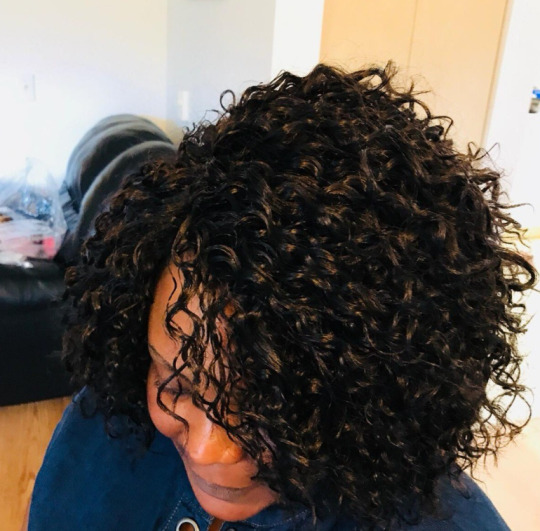
Experience the beauty of authentic Ghana braids at Soma African Hair Braiding. Our expert stylists specialize in creating intricate and long-lasting designs that protect your natural hair while enhancing your look. Located in Bremerton and Silverdale, we offer top-notch service for all your braiding needs.
Visit:- https://somahairbraiding.com/blog/f/unlock-the-magic-of-african-braids-cornrows-fulani-braids-style
#hair braiding tacoma#hair braiding bremerton#hair braiding and weaving#hair braiding#african hair braiding#Ghana braids
0 notes
Link
Braided hairstyles for kids are not just a fashion statement; they are a versatile and practical choice for parents and children alike. From school days to sp
0 notes
Text
21 MARCH 25.
𓂀 THE ASTROLOGY OF BLACK PEOPLE .
AN: this is a post by a dark skin black woman of west african descent. please keep that in mind. my experiences and cultures will largely inform this post.
SOURCE FOR ART BELOW
next >


⭐️ PLANET RULERSHIP .

the idea for this post started when i was sat thinking about how all of astro tumblr said black people are ruled by saturn.
i would like to say that's crazy! i understand the thought process, but we (black people) are not defined by our oppression and struggle! we have cultures and a multitude of other things to offer as well!
saturn rules over things like oppression and poverty. it makes sense considering the history of the black diaspora, slavery and colonialism to associate saturn with us. does saturn have a good side too? yes! however, i do not believe we are solely ruled by saturn. many other demographics could be saturnian based on their experience with oppression.
i, personally, find that the sun correlates best to black people and the black diaspora.
the most obvious reason is that our skin contains a TON of melanin, which is our natural protection from the sun! (please please please wear sunscreen though. we still need it.)
the sun is related to gold, as are black people. we have an entire country that was named the "gold coast" (present-day ghana) due to its plentiful gold reserves. many black cultures hold gold in particularly high esteem and to this day, i see black people wearing gold more than any other metal.
black people are associated with pride in ourselves and our cultures. we are noted to have rich and ancient cultures, the oldest actually. one thing the sun represents is hierarchy, and black cultures tend to have a focus on this - particularly respecting our elders.
we're known for our self-expression and dominating the arts — see: the entire music industry, the harlem renaissance, reggae, ska, samba, afrobeats, highlife, amapiano etc. it goes on. we influence culture through our self-expression and have found ways to liberate ourselves through self-expression. a great example of this is capoeira, an afro-brazilian martial art disguised as a dance. our cultures are heavily inspiring and imitated with everyone wanting to wear braids, our clothes, take part in our music and people are even obsessed with our food. the sun rules over leo and the 5h. our dominance over the arts is not to be dismissed, nor can it be ignored.
the sun rejoices in the 9h. black people have a particular relationship with religion and education. black women are the most educated group in the usa. the church has played a large role in black cultures and communities historically and still does today. we can see this most obviously with martin luther king jr. not to mention, we have our own indigenous religions that managed to survive slavery and spread from africa to the americas. there are several different religions thriving among black people - with lots of black africans taking part in both muslim and christian festivities.
the sun also exalts in aries. black people are known to pioneer many things and focus on self-determination of the diaspora. our movements inspired many other movements and our cultures have inspired many other cultures and artists.
if anything, black people are more likely to be ruled by the sun and not saturn... we are not simply suffering.
honestly we could be ruled by jupiter too (rules over 9h and 12h, rejoices in the 11h of community, the plentiful resources in africa, jupiter's exaltation in cancer....). if you have some thoughts, please share!! i'd love to talk more about this <3 i may make a separate post breaking this down.. there's a lot more to say!
⭐️ PAN AFRICANISM .

Pan-Africanism is a general term for various movements in Africa that have as their common goal the unity of Africans and the elimination of colonialism and white supremacy from the continent.
SOURCE.
i looked at the charts of some of the most influential pan-africanists to find the astrological essence of the movement.
[ malcolm x, marcus garvey, kwame nkrumah, w.e.b du bois, patrice lumumba, nelson mandela, frantz fanon ]
their big 3 showed clear ketu, rahu and jupiter dominance.
ketu represents the past and liberation. rahu represents the future and innovation. it's not surprising that the nodes showed up prominently in their charts. pulling on the myth of ketu and rahu, they were separated and split into a headless body (ketu) and bodiless head (rahu). this mirrors the creation of the black diaspora, which was created due to the horros of slavery and black people being split up across the atlantic ocean. i believe both nodes showing up represents a return to wholeness that pan-africanists aimed for.
rahu also aims to critique society (seen in ardra) and revolutionise it. there is a large focus on changing society and removing its perceived injustices.
jupiter is a guru, known as "the teacher to the gods". his role is to bestow wisdom and remove ignorance. the aim of removing white supremacy from the black diaspora and from the african continent required a lot of education. most of these men were intellectuals and placed heavy emphasis on educating the black community.
⭐️ AFRO HAIR CARE .


@vindelllas post on hair in vedic astrology ends with contemplations on protective hair styles such as braids. venusian hair as venus gives curly hair and our hair is coily (the tighest form of curls) plus the adornment of braids and other african hairstyles. braids were also a status symbol in african societies such as ancient egypt (venus rules over elitism).
unfortunately, black people really hate our natural hair. we've been forced to feel ashamed of our coils and kinks and now we perpetuate these same cycles. we use relaxers that burn our scalps, fry our hair and even give us cancer... we use braiding hair that tugs at our roots causing traction alopecia and also gives us cancer. our hatred of our hair is literally killing us. it's devastating and, for some reason, still the source of major discourse when the truth is blatantly obvious.
this all causes a damaged venus. this reflects even further in the black community. the hatred of women (ruled over by venus), our bodies, our freedom etc. the blatant disrespect towards us, the harm done onto us, and the way we are controlled. we are seen as "the least desirable women" and we are constantly made fools of and degraded by our own people and other races. however, our features are copied en masse — our naturally full lips, our naturally full figures, our braids, our fashion sense. all venusian things that are copied and mimicked while we are put down and called "ugly".
unfortunately, a lot of us internalise this hatred. on the topic of hair, many women wear wigs to hide their natural hair, which they call "difficult", "ugly" and "manly". they use relaxers to achieve a straightened look, or constantly silk press their hair. it's undeniably out of self-hatred and i'm tired of pretending it's not.
it's gotten so bad that women wearing "stiff wigs" or even their natural hair, and not aligning with the goal of conforming perfectly to eurocentric ideals are deemed as "less black". it sounds crazy, but it's true. black women that wear their natural hair or wear "obvious" wigs are seen as wanting to pander to white people.... there's lots to be said, but i'll leave it there.
hair relaxers specifically cause two types of cancer — uterine (uterus) and breast cancer. it's a clear attack on women as women are the ones who use relaxers the most. same with braiding hair.
this post is very important. we need to learn to start loving our natural kinky and coily hair! it's venusian and we need to treat it as such. with love, care and devotion.
i also love this post, relating our hair's transformative qualities to mermaids. we definitely need to embrace our hair's flexibility and malleablity. it's definitely fragile, which is why we wrap it up in silks, and we need to treat our crowns with such reverence. romanticise and truly fall in love with your afro hair, ladies!! 💋
. * . ⁺ .⁺ ˚ . * . ⁺ .⁺
© 2025 opalblade. do not copy, repost, or translate my works to any other platforms.
#✧ / opalblade originals .#✧ / opalblade miscellaneous .#vedic astrology#astro notes#astro observations#astroblr#astrology#vedic astro notes#vedic astro observations#✧ / opalblade on ketu .#✧ / opalblade on rahu .#✧ / opalblade on the sun .#✧ / opalblade on venus .#vedic chart#tropical astrology#western astrology
288 notes
·
View notes
Text
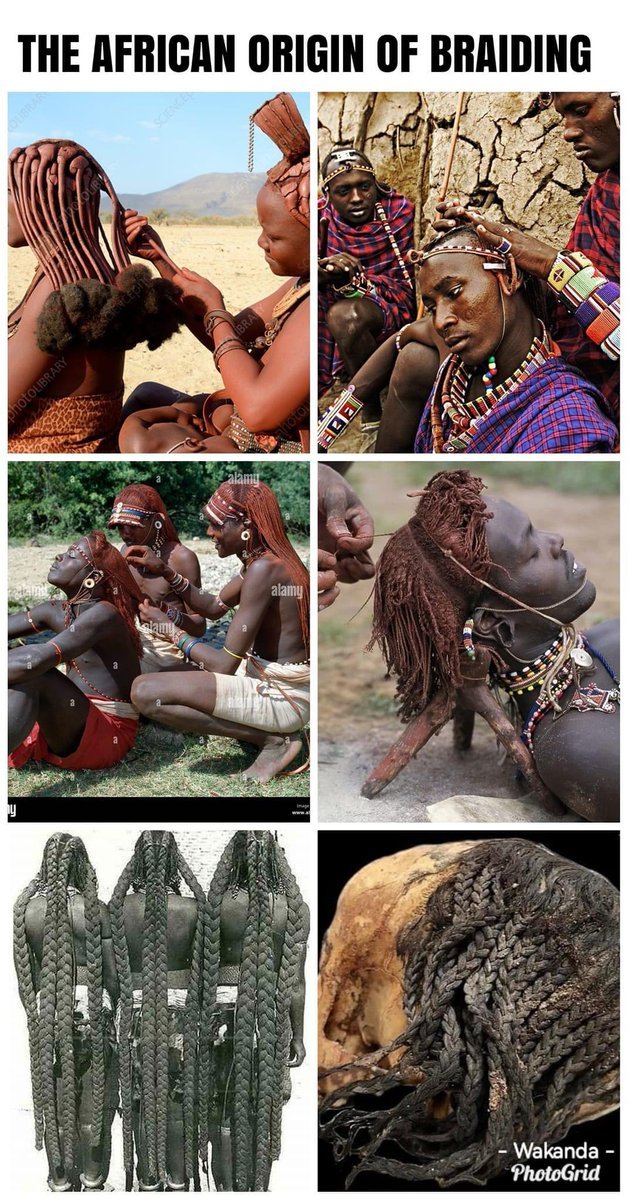
Typical African on Twitter
@Joe__Bassey
THE AFRICAN ORIGIN OF BRAIDING The origin of braids can be traced back 5000 years in African culture to 3500 BC—they were very popular among women. Braiding started in Africa with the Himba people of Namibia. The country’s Mbalantu ethnicity uses eembuvi braids as an initiation into womanhood – our first examples of single braids or “box braids". In Angola, among certain tribes, hair grooming was an activity trusted only by other family members — something that women were taught at a young age and encouraged to participate in throughout their lives to promote womanhood. The origins of the ever-popular Bantu Knots have been traced to the Bantu people who exist across central and Southern Africa. “South Africa’s “Zulu Knots” are said to be the original manifestation of the style, and South Africa is also credited for the invention of “Box braids”, with evidence of the style being traced back to 3500 BCE. Braiding’s roots in East Africa have been traced back to 3500 BC, with cornrows (called Kolese braids in Yoruba) maintaining the top spot in popularity for just as long. Historically, Somali women have been recorded donning long, small braids when approaching puberty. Ethiopia has maintained an admirably close relationship with its traditional forms of braiding. In the Southwestern Omo Valley, the Hamar people have perfected their hairstyles as a means to dictate male worth and female marital status. The importance of braids in communicating identity is a rich part of Uganda’s history, too. In Kenya, the Maasi and Kikuyu tribes have donned their famed matted braids, intricate beading, and gold detailings ever since. West Africa boasts an abundance of hair braiding styles, many of which have influenced global African culture and trends for decades. The Fula people, whose 30 million strong population exists across West Africa, gifted the world with Fulani braids. In Ghana, the iconic Banana or Ghana braids have gained favor for their easy application, upkeep, and excellence in providing protection to natural Black hair. The first examples of this way of braiding are traced back to hieroglyphics and sculptures found around 500 BC. Similarly, Nigeria’s rich history of braiding can be traced back to a clay sculpture dated to 500 BCE depicting a cornrowed member of the Nok tribe. Mali's Dogon people has various spiritual idols depicting cornrowed spiritual leaders, and the retained tradition of The Dama dance have allowed us the privilege of understanding the bewildering society that contributed to our understanding of our universe. In Sierra Leone, Mende people's hair is closely tied to femininity and is juxtaposed with the way forests grow out of the Earth – the vegetation covering Mother Earth grows skyward the way Afro-textured hair grows out of the head. Senegal’s Senegalese Twists or “Rao” as they’re known locally came in vogue as an alternative means of creating individual, long braids – if locs or “box braids” aren’t your style. Gambian warriors were known to march off to war with tightly coiled braids, too. The Mangbetu people of the Democratic Republic of Congo, known for their practice of wrapping their skulls into a cone shape from infancy, locally referred to as “Lipombo, ” the elongated heads were then adorned with braids plaited into a crowned, basket shape called edamburu. Cameroon’s bountiful Fulani community has kept many of their hair traditions well and alive, while the region’s Bantu population participated in the popularity of the now-famed ‘Bantu knots’. In Chad, women of the Basara ethnicity are known for their thick, long, luscious hair – often plaited into waist-long individual braids. In Kemet around 1600 BCE, hair braiding amongst women of royalty, nobility, and concubines was adorned with gold, beads, and perfumed grease, while common folk kept to simpler styles necessary to get work done. #Africa
15 notes
·
View notes
Text
Re the respecting kids' boundaries THING
So there is a kid at my church who I've posted about before who is a transracial adoptee from Ghana, and who will occasionally flinch, very understandably, at images of war, privation, etc.
She gets along well with my mom, as her adoptive mom is someone my mom does a lot of church stuff with. So she'll run up to her and hug her, etc. But she would rarely hug me, and this made me sad. I wanted hugs too! I wanted to show her that she was welcome and we had her back, even if we didn't always know what she was dealing with as a bunch of random white people.
Fast forward mumbleblerg years and she's a young teen, and is a bit less huggy in general but still affectionate with my mom and not with me. I still feel a bit :-( about it but of course I don't say anything, it's silly I'd be super invested.
Well a couple weeks ago, she'd dyed the tips of her braids pastel pink, with glittery pink beads on the ends. I thought it looked lovely with her dark hair and skin. So I said to her one day, "Hey B, your hair is beautiful! I really like it."
Child RAN OVER TO ME and threw her arms around me in the BIGGEST HUG. It was AWESOME.
If you care about somebody, and you put that above what you want from them... sooner or later, they'll eventually notice.
16 notes
·
View notes
Text
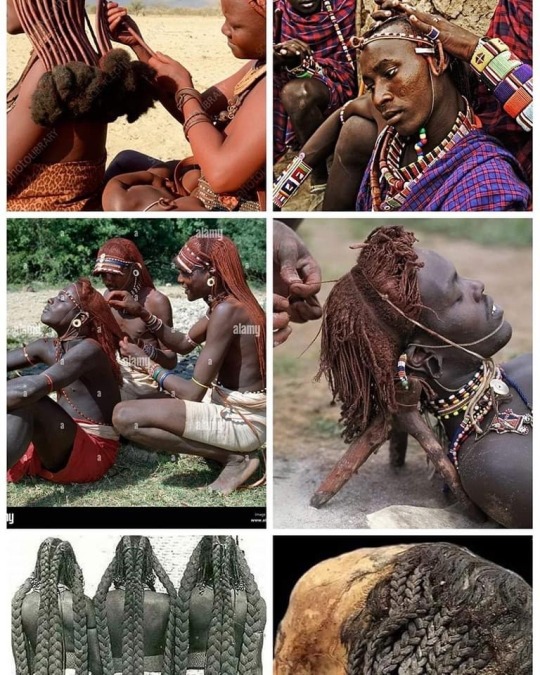
THE AFRICAN ORIGIN OF BRAIDING
The origin of braids can be traced back 5000 years in African culture to 3500 BC—they were very popular among women. Braiding started in Africa with the Himba people of Namibia. The country’s Mbalantu tribe uses eembuvi braids as an initiation into womanhood – our first examples of single braids or “box braids". In Angola, among certain tribes, hair grooming was an activity trusted only by other family members — something that women were taught at a young age and encouraged to participate in throughout their lives to promote womanhood. The origins of the ever-popular Bantu Knots have been traced to the Bantu people who exist across central and Southern Africa. “South Africa’s “Zulu Knots” are said to be the original manifestation of the style, and South Africa is also credited for the invention of “Box braids”, with evidence of the style being traced back to 3500 BCE. Braiding’s roots in East Africa have been traced back to 3500 BC, with cornrows (called Kolese braids in Yoruba) maintaining the top spot in popularity for just as long. Historically, Somali women have been recorded donning long, small braids when approaching puberty.
Ethiopia has maintained an admirably close relationship with its traditional forms of braiding. In the Southwestern Omo Valley, the Hamar tribe have perfected their hairstyles as a means to dictate male worth and female marital status. The importance of braids in communicating identity is a rich part of Uganda’s history, too. In Kenya, the Maasi and Kikuyu tribes have donned their famed matted braids, intricate beading, and gold detailings ever since. West Africa boasts an abundance of hair braiding styles, many of which have influenced global African culture and trends for decades. The Fula people, whose 30 million strong population exists across West Africa, gifted the world with Fulani braids. In Ghana, the iconic Banana or Ghana braids have gained favor for their easy application, upkeep, and excellence in providing protection to natural Black hair. The first examples of this way of braiding are traced back to hieroglyphics and sculptures found around 500 BC. Similarly, Nigeria’s rich history of braiding can be traced back to a clay sculpture dated to 500 BCE depicting a cornrowed member of the Nok tribe. Mali's Dogon tribe has various spiritual idols depicting cornrowed spiritual leaders, and the retained tradition of The Dama dance have allowed us the privilege of understanding the bewildering society that contributed to our understanding of our universe. In Sierra Leone, Mende people's hair is closely tied to femininity and is juxtaposed with the way forests grow out of the Earth – the vegetation covering Mother Earth grows skyward the way Afro-textured hair grows out of the head.
Senegal’s Senegalese Twists or “Rao” as they’re known locally came in vogue as an alternative means of creating individual, long braids – if locs or “box braids” aren’t your style. Gambian warriors were known to march off to war with tightly coiled braids, too. The Mangbetu people of the Democratic Republic of Congo, known for their practice of wrapping their skulls into a cone shape from infancy, locally referred to as “Lipombo, ” the elongated heads were then adorned with braids plaited into a crowned, basket shape called edamburu. Cameroon’s bountiful Fulani community has kept many of their hair traditions well and alive, while the region’s Bantu population participated in the popularity of the now-famed ‘Bantu knots’.
In Chad, women of the Basara Arab tribe are known for their thick, long, luscious hair – often plaited into waist-long individual braids. In Kemet around 1600 BCE, hair braiding amongst women of royalty, nobility, and concubines was adorned with gold, beads, and perfumed grease, while common folk kept to simpler styles necessary to get work done. Back in the day, braiding hair was considered a special ceremonial practice amongst Sudanese women, even holding the braiding “events” on specific days when female neighbors and friends were invited to partake.
Reference
African Tribes and the Cultural Significance of Braiding Hair". Bright Hub Education. 9 July 2011. Archived from the original on 1 September 2017. Retrieved 1 May 2018.
7 notes
·
View notes
Text
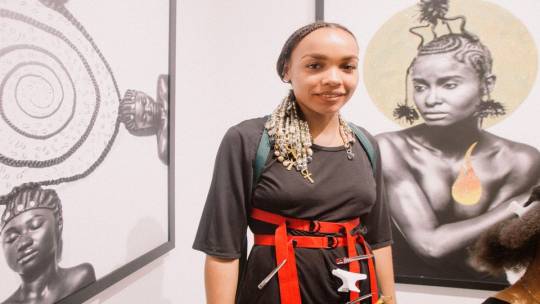
Shani Crowe will be the first to admit that she’s been braiding hair “forever.”
The 28-year-old was the genius behind Solange Knowles’ stunning crown on Saturday Night Live and a Saint Heron event. But before all the large-scale attention, the Chicago native was braiding, creating sculptures and shooting photography.
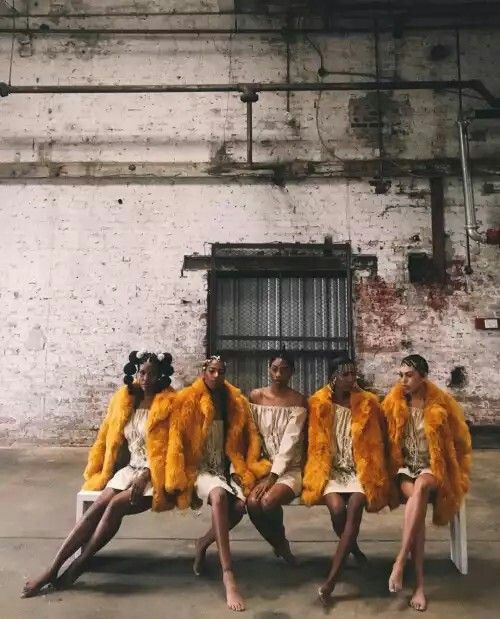
“I used to be kind of like the unofficial documentarian of everything that happened in my friend group from like high school and college to beyond,” she told ESSENCE.
“I come from a family of artists too. My dad’s an illustrator and photographer and he’s a historian by trade but he’s always been an artist. He paints with watercolor, he does a lot of watercolor work. Most of what I do is drawing and is sculptural work but then I’ve always braided and I’ve always saw braiding as something that was separate from my artistic repertoire but I put just as much artistry into the braids that I do.”
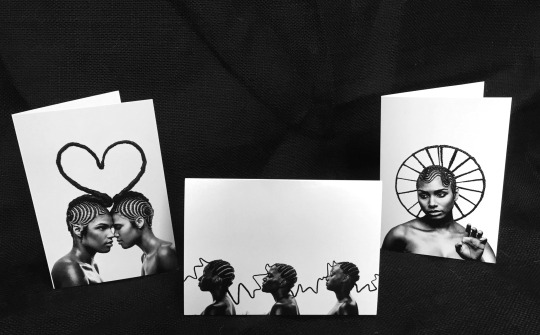
Crowe had the privilege of showing her work at Art Basel’s SCOPE exhibit and Creme of Nature’s Entwine event in Miami last week. Surrounded by large-scale black-and white-photographs of women with intricate braids, the Howard University graduate shared how she made the leap from taking the photos to showcasing her work for the world.
“My goal was around $3,000 and that was a really modest estimate at the time,” she said about using a funding platform that matches donations. “It took a minute but near the end of my campaign people donated and I made the $3,000 that I needed. And then people just started to support me in ways that I didn’t realize I needed, but were just monumental and me being able to create this work.”
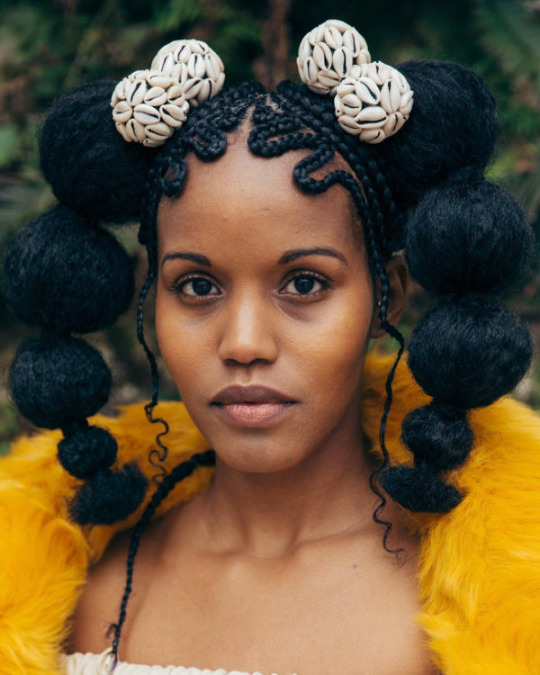
Over the past year she’s been featured in ESSENCE, W, Allure and The New York Times —in addition to having an exhibit at Brooklyn’s MoCADA. But for this interdisciplinary artist, this is just the beginning.
“I’m going to Ghana in February,” she said. “I have so many more concepts for exceptional-grade photography, exceptional-grade art that I will capture as photograph and I really want to do a book.”
“I want to go to different regions in Africa, learn their traditional braid techniques and then also talk to the women who are braiders about how having a trade or being entrepreneur has changed their life.”
4 notes
·
View notes
Text
Embracing the Beauty of Black Color Hairstyles: A Timeless Trend
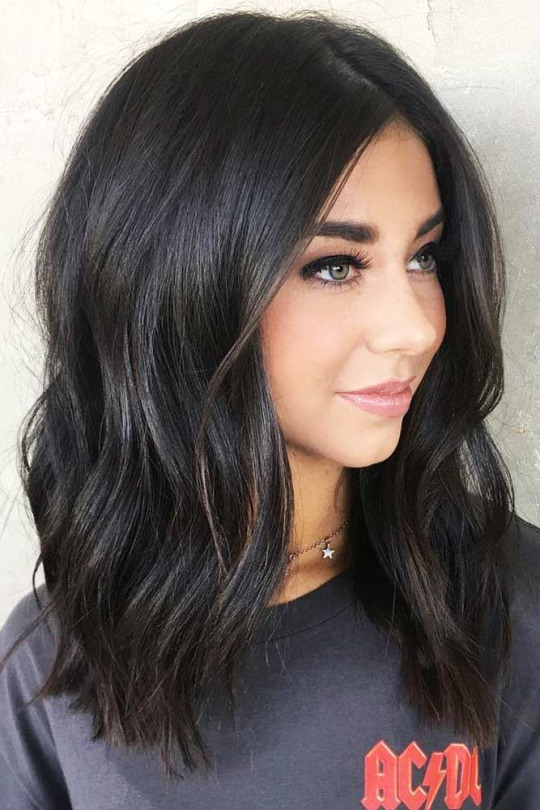
In the vast world of fashion and beauty, trends come and go, but there's one element that remains eternally stylish and captivating: black color hairstyles. Black hair has a unique allure and versatility that allows for endless creativity and self-expression. Whether you're looking to rock a sleek bob, intricate braids, or voluminous curls, black hair offers a canvas for artistic hairstyles that never go out of fashion. In this blog post, we celebrate the timeless beauty of black color hairstyles and explore the different ways you can embrace this incredible trend.
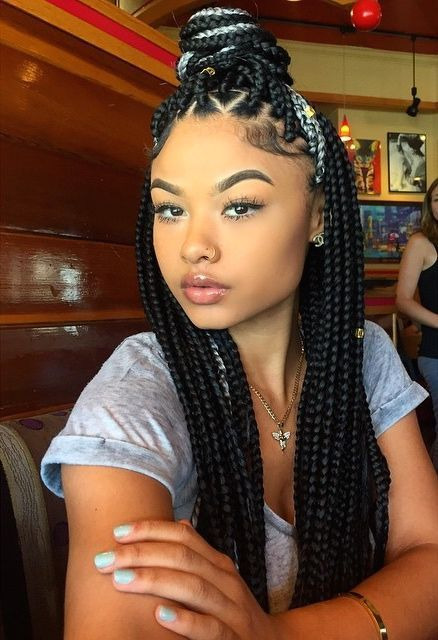
The Significance of Black Color Hairstyles:
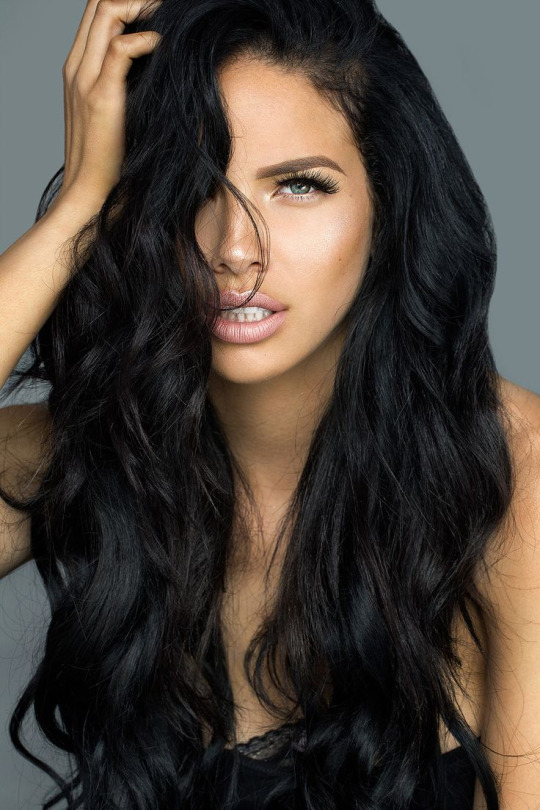
Black color hairstyles hold a special significance in various cultures and communities around the world. Historically, black hair has been a symbol of pride, strength, and identity for people of African descent. From traditional cornrows and dreadlocks to modern styles like afros and twists, black hair carries a rich cultural heritage. Moreover, black color hairstyles have gained popularity beyond racial boundaries, captivating individuals from diverse backgrounds who appreciate the beauty and versatility of these styles.
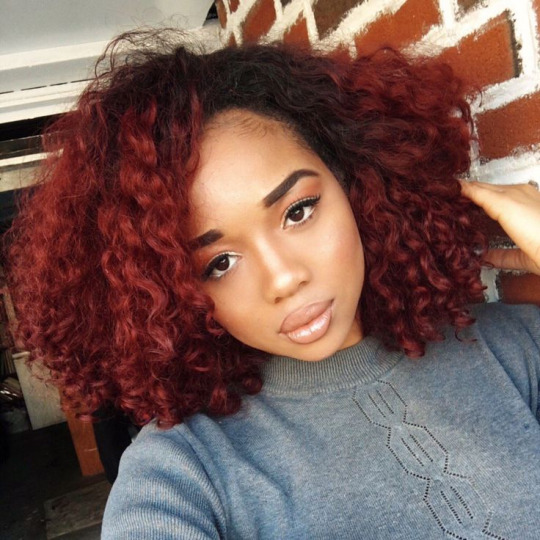
Sleek and Chic: The Classic Bob:
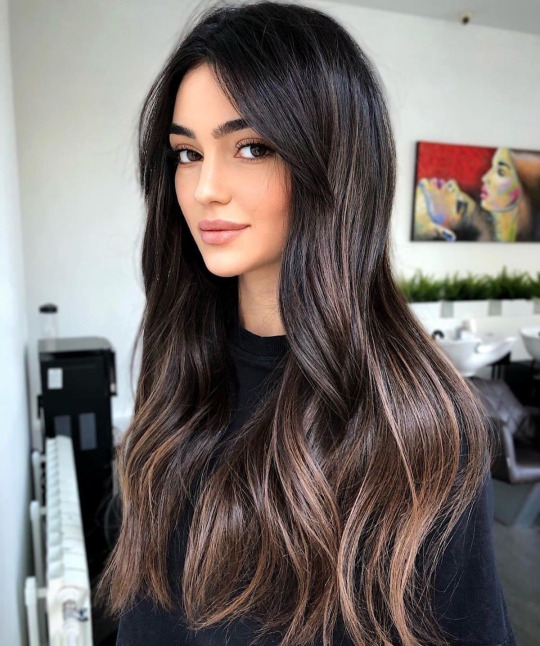
One iconic black color hairstyle that has stood the test of time is the classic bob. This elegant and sophisticated cut frames the face beautifully and exudes an air of confidence. Whether you opt for a blunt cut or a slightly asymmetrical style, the black color adds depth and intensity, making the bob a truly eye-catching choice. Pair it with a bold red lip and minimal makeup for a timeless and polished look.
Braids: A Work of Art:
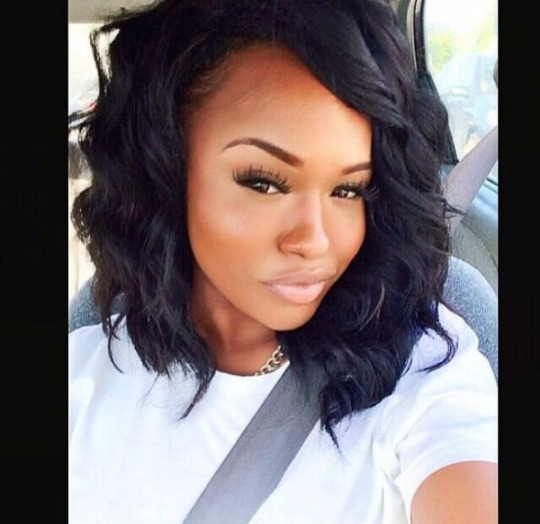
Braided hairstyles have been a cornerstone of black hair culture for centuries. The intricate patterns and attention to detail make them true works of art. From the iconic cornrows to box braids, Ghana braids, and Senegalese twists, there are countless ways to rock braided styles. The black color amplifies the elegance and precision of these hairstyles, giving them a striking and captivating appearance. Whether you're going for a simple and neat look or a more elaborate design, braids allow for endless creativity and personalization.
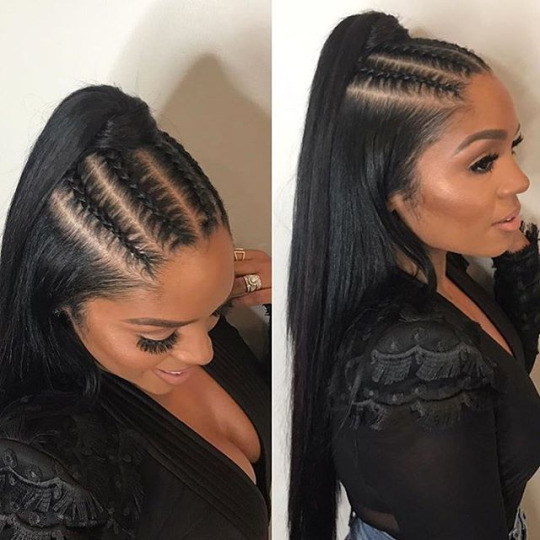
Natural Hair: Embracing Your Curls:
In recent years, there has been a surge in the natural hair movement, encouraging individuals to embrace their curls, kinks, and coils. Black color hairstyles for natural hair celebrate the beauty of textured hair and encourage self-acceptance. From afros to twist-outs, bantu knots, and wash-n-go styles, the versatility of black natural hair is truly awe-inspiring. The black color enhances the depth and definition of these hairstyles, allowing your natural hair to take center stage and make a bold statement.
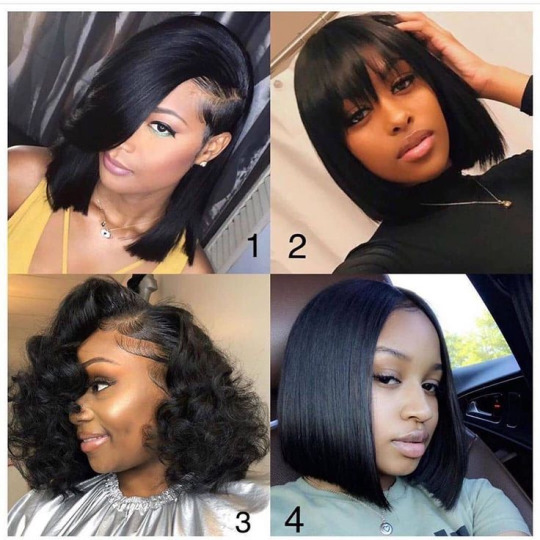
Experimenting with Color:
While we're celebrating black color hairstyles, that doesn't mean you can't play around with other colors too! Adding pops of color or highlights to your black hair can create a stunning contrast and elevate your look even further. Whether you go for vibrant hues like red, purple, or blue, or opt for subtle caramel or honey-toned highlights, the possibilities are endless. Just remember to choose a professional stylist who can help you achieve the desired results while maintaining the health and integrity of your hair.
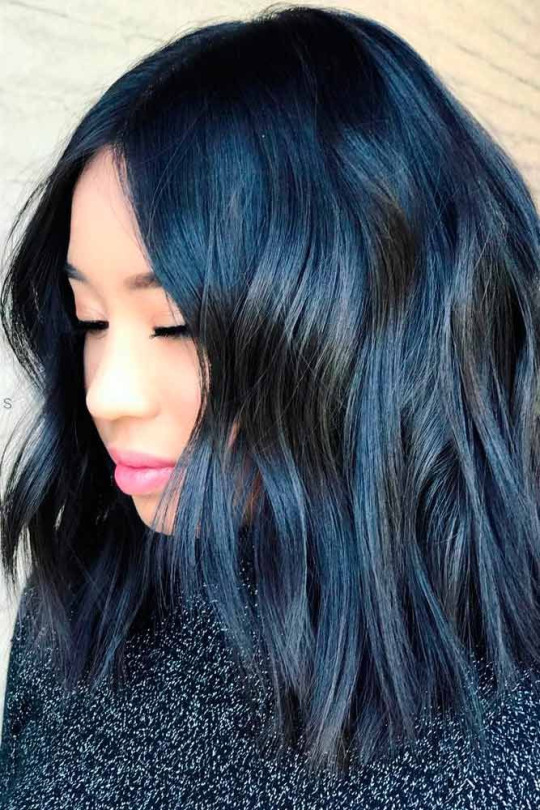
Black color hairstyles are a timeless trend that celebrates the natural beauty and diversity of black hair. From sleek bobs to intricate braids and natural curls, black hair offers a world of possibilities for creative expression. Embrace your individuality, celebrate your roots, and experiment with different styles to find the one that truly reflects your unique personality. Whether you're attending a special occasion or simply want to switch up your everyday look, black color hairstyles are here to stay, captivating hearts and turning heads wherever you go.
2 notes
·
View notes
Text
Hair Salon Near Me - Job Task Ghana

Are you trying to find the best Hair Salon Near Me? Job Task Ghana assists you in locating the top salons in your neighborhood that provide everything from coloring and haircuts to braiding and style. With confidence, schedule your appointment after reading reviews and comparing providers. We have the ideal match for you, whether you want a fast trim or a complete makeover. Use our Contact Us page to make an appointment or request assistance, and visit our Blog for the most recent hair care advice.
#job task ghana#Hair Salon Near Me#Job Task Ghana#Barbershop Near Me#Electrical Work#Electrician#IT Jobs#Plumbing Work#Jobs Ghana
0 notes
Text

#moliy#afrobeats#afrofusion#music#wondergang#wondergirl#ghana girl#ghana#original character#braids#beauty
7 notes
·
View notes
Text
Cinco salões afro em Curitiba para dar um glow up no visual
Cinco salões afro em Curitiba para dar um glow up no visual https://ift.tt/aKplORH garantir que o corte ou tratamento desejado saia do jeito adequado. Em Curitiba, há salões que focaram nos cabelos afro para atrair a clientela que de quer um glow up no visual. Para ajudar, o Plural separou cinco salões especializados e um glossário com as principais técnicas de estética afro para os cabelos. Salão Ornella e Mr Jlee Cabelos Afro Design O salão fica no Capital Shopping Centro, na rua Conselheiro Laurindo, 600, pertinho do terminal do Guadalupe. Também há uma unidade na avenida Visconde de Guarapuava, 2433, no Centro. O atendimento é de segunda a sábado, das 9h às 18h30, mas é necessário fazer o agendamento com antecedência. Além das tranças, entrelaçados e permanente afro, o salão também tem cabelos orgânicos, sintéticos e outros produtos que podem ser comprados virtualmente e entregues em todo Brasil. Para saber mais e agendar horário, basta entrar em contato pelas redes sociais. Deby Tranças O salão Deby Tranças fica na avenida Jaime Reis, 588 - São Francisco e funciona de terça a domingo, a partir das 10h, com horários variados de fechamento, mas geralmente às 20h. A trancista Deby atende adultos e crianças, mas apenas com hora marcada. Entre os tipos de tranças disponíveis para a clientela estão a Fulani braids, trança Twist, Lemonade braids, boxeadora, Faux locs, Ghana braids, Nagô e outras. É possível agendar o atendimento e fazer orçamento online. Para isso, é só acessar o Instagram. Salão Jamaicano O Salão Jamaicano fica na avenida presidente Wenceslau Braz, 4015, Portão. Cortes, tratamentos e tranças são os carros-chefes do local. Além disso, o local também tem especialização em cortes e tranças masculinos. O atendimento é de terça a sábado, entre 9h e 19h. O estabelecimento funciona há mais de 35 anos em Curitiba e é um dos mais tradicionais da cidade. Para marcar horário e consultar preços dos serviços, basta acionar o salão no Instagram. Silverio's Jon tranças afro A Silverio’s Jon Tranças Afro está localizada Herondina de Freitas Ribeiro, 81 - Cidade Industrial de Curitiba e atende das 9h às 20h, de segunda a sábado. O foco principal do estabelecimento é o atendimento do público masculino, mas mulheres também podem ser clientes. O trancista Jon trabalha há mais de 20 anos com tranças e penteados afros e um dos diferenciais do atendimento é o bom papo, segundo os clientes. Para saber mais e agendar atendimento é preciso fazer contato por meio das redes sociais. Barbearia Espaço Tribos A Barberia Espaço Tribos fica na rua Treze de Maio, 255, no centro de Curitiba. O estabelecimento funciona de segunda a sexta das 9h às 19h e aos sábados até 16h. O local, além dos serviços de cuidados com os cabelos afro, tranças e cortes, também é um estúdio de tatuagem e piercing. Para consultar valores e horários disponíveis para atendimento, basta enviar mensagem por meio das redes sociais. via Plural Curitiba https://ift.tt/KuJOB0k April 11, 2025 at 08:14AM
0 notes
Text
Senegalese twists
African braiding salons specialize in traditional and modern protective styles that promote hair growth and reduce breakage. Styles like Senegalese twists and Ghana braids are not only stylish but also low-maintenance, making them perfect for busy lifestyles. Experienced braiders understand the right tension and techniques to keep your scalp healthy while achieving a sleek, long-lasting look.
Website: https://www.zupyak.com/p/4616953/t/find-the-best-african-braiding-salon-for-senegalese-twists-and-ghana-braids
#hair braiding tacoma#hair braiding bremerton#hair braiding and weaving#african hair braiding#hair braiding sylverdale#african hair
0 notes
Text
Crowning Confidence: Expert African Hair Braiding & Natural Styling in Spokane Valley
Introduction
In the vibrant heart of Spokane Valley, a unique haven of beauty and cultural expression thrives — Clary Hairbraids, your go-to destination for transformative African hairstyles. Hair isn’t just about aesthetics; it’s a bold statement of identity, heritage, and self-love. At Clary Hairbraids, every braid, twist, and style tells a story of tradition meeting modern elegance. Whether you’re searching for “hair braiding near me” or specific styles like box braids, our salon is the local favorite that blends artistry, authenticity, and top-tier professionalism.
Your Local Hair Braiding Specialists in Spokane Valley
Searching for “hair braiding Spokane Valley” should lead you to a space that understands not just technique, but the essence of African braiding culture. At Clary Hairbraids, we do more than braid hair — we celebrate heritage. Our expert stylists are trained in a wide array of techniques that preserve hair health while delivering stunning results. From protective styles to elaborate braided designs, we’ve mastered the art of African hairstyling.
Our passion lies in offering clients the perfect combination of quality, care, and creativity. Whether you want long-lasting box braids or a quick natural hair refresh, our services are tailored to suit all textures and preferences.
Box Braids and Beyond: Embrace the Power of Protective Styling
One of our most sought-after services is box braids, and it’s no surprise why. Box braids are not only stylish but also functional, offering a protective option that helps your natural hair grow and remain damage-free. If you've been Googling "box braids near me", you're in the right place.
Our stylists pay close attention to scalp health, braid tightness, and parting precision, ensuring that every set of braids not only looks amazing but feels comfortable and lasts for weeks. Whether you want small, medium, or jumbo box braids, we’ve got the expertise to give you a flawless finish.
The Art of African Braiding: A Tradition We Honor Daily
At Clary Hairbraids, African braiding is not just a service — it's a craft deeply rooted in culture and history. Braiding styles have evolved through centuries, symbolizing everything from marital status to tribal affiliation. Today, they remain a timeless expression of beauty and empowerment.
Our services include:
Cornrows: Sleek and versatile, ideal for both formal and casual looks
Senegalese Twists: A soft, elegant alternative to traditional braids
Ghana Braids: Also known as feed-in braids, ideal for sculpted, detailed styles
Kinky Twists: Perfect for those seeking a natural, coily aesthetic
Fulani Braids: Decorative and intricate, often accessorized with beads
Crochet Braids: A quick-install protective style with plenty of room for creativity
Whether you desire a classic style or something cutting-edge, our braiders are equipped to deliver high-quality results every time.
Natural Hair Styling: Love Your Texture, Embrace Your Roots
We understand the unique needs of natural hair, and our natural hair styling services are designed to nurture, protect, and celebrate your curls, coils, and kinks. From twist-outs and braid-outs to flat twists and updos, we create looks that enhance your natural beauty.
Our stylists use gentle techniques and nourishing products to maintain the health of your hair. Whether you're transitioning, fully natural, or exploring styles that promote growth and protection, we work with you to develop a custom styling routine.
No harsh chemicals. No shortcuts. Just authentic, healthy hair care.
Why Clary Hairbraids is the Best Choice for African Hairstyles in Spokane Valley
When it comes to “African hairstyle” services in the region, Clary Hairbraids sets the gold standard. Here's what sets us apart:
Expert Braiders with Cultural Expertise: Our team is skilled in the diverse methods of African braiding and styling.
Customized Services: We take the time to consult with each client to understand their vision, hair type, and goals.
Hygienic and Relaxing Environment: Your comfort is our priority — our salon is clean, welcoming, and safe.
Premium Products: We only use top-quality oils, creams, and tools to support your scalp and strands.
Consistent Results: Our reputation is built on happy, returning clients who trust us with their hair time and time again.
You no longer have to search “hair braiding near me” endlessly — you've found your go-to salon right here in Spokane Valley.
Styles for Every Season and Occasion
Hair tells a story — of change, celebration, and growth. That’s why we offer braided styles for every life moment:
Back-to-School Braids: Stylish and manageable looks for young girls and teens
Vacation Styles: Low-maintenance, beach-ready braids that hold up in any climate
Special Occasion Updos: Weddings, proms, and formal events call for elegance
Everyday Glam: Styles that keep you looking fresh and professional every day
Whether you’re prepping for a getaway, a new season, or simply craving a change, our stylists can craft a look you’ll love.
Supporting Hair Growth Through Protective Styles
African braiding is not just about aesthetics — it’s also an incredible way to maintain and support healthy hair growth. Our protective styles help minimize daily manipulation, reduce breakage, and retain moisture.
Our team educates clients on how to care for their styles between appointments, from nighttime protection to hydration tips. We’re your partners in hair health, making sure every strand stays strong.
Inclusivity and Affordability
We welcome everyone — all ages, all backgrounds, all hair types. Whether you're trying African styles for the first time or you're a lifelong braiding enthusiast, our team treats each client with care and respect.
And we believe beauty shouldn’t break the bank. That’s why Clary Hairbraids offers competitive prices for top-tier services. We also provide bundled deals for families or those booking multiple services, ensuring you get the best value for your time and money.
Book Your Appointment Today
Your hair deserves the best. Whether you're after sleek cornrows, voluminous twists, or natural styling that celebrates your unique texture, Clary Hairbraids is your trusted destination in Spokane Valley.
Say goodbye to unreliable search results for "hair braiding near me" — Clary Hairbraids delivers professional, artistic, and culturally-rooted African hair braiding services tailored to your lifestyle.
Visit Us and Experience the Clary Hairbraids Difference
Located conveniently in Spokane Valley, our salon is a vibrant, inclusive space where tradition and style meet. We invite you to experience the power of African hairstyling — not just for beauty, but for identity, strength, and self-expression.
Make your next style a celebration of who you are. Call or visit Clary Hairbraids and let your hair do the talking.
0 notes
Text
Discover the Art of African Hair Braiding at Nefertiti Hair Salon
As far as natural hair care and relaxation is concerned, Nefertiti Hair Salon Company has all that it takes. Having worked as one among the prominent African hair braiding salons, we offer good and elegant braided hair styles that will suit your personality and your culture too. Are you considering a conservative or trendy do As we mentioned earlier, our qualified hair stylists will help to make the desired image real come true.
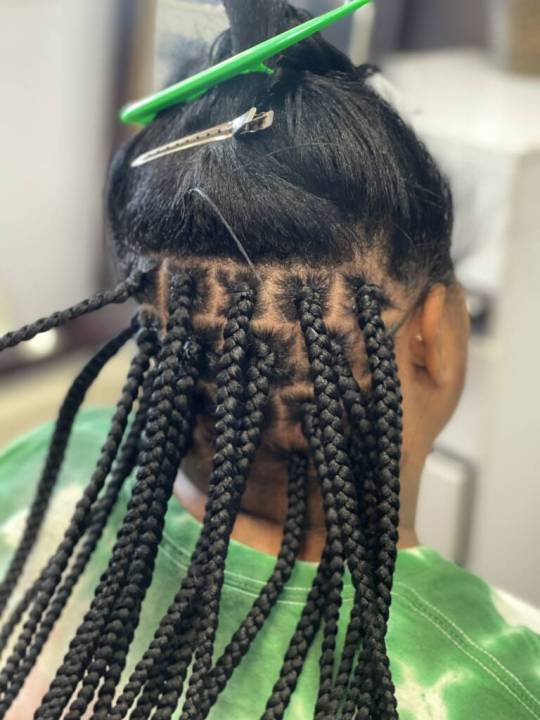
Why Choose Nefertiti Hair Salon?
Now some of our services the we offer include simple cornrows, box braids, Ghana braids, and the latest fashion in the market; Senegalese twists. This salon was established to offer the African hair braiding romance where a client can come in and feel comfortable and relaxed. We only permit the use of high quality materials in utensils when working on your hair do to enhance its health and look during the procedure you choose.
Our Services
Traditional Braiding: Celebrate your roots with timeless styles like cornrows and Fulani braids.
Modern Trends: As usual, there are new trends that are on trend today which include the knotless braid and the lemonade braid.
Custom Styles: Our stylists make styled based on the specific designed or themed event.
Hair Care: As much as our focus is to give you nice braids, we provide the necessary information of how you can maintain your hair when it is braided.

Book Your Appointment Today
Ready to transform your look? Come to Nefertiti Hair Salon and experience the beauty and unforgettable hair braiding service that has supported many of our customers. Let us assist you to appreciate the cultural hair fashion of African hair braiding in the modern society in a trendy, healthy and natural way that suits you.
0 notes
Text
Chapter Two
A Negotiation with Mice
Two men play draughts in an abandoned warehouse. Besides the game board, the table between them is littered with empty fast food cartons and bottles of beer. Rusty farm equipment, stripped cars, and an assortment of grime covered junk take up most of the space in the warehouse. But a few feet away are two mattresses covered in dirty blankets and old clothes. The men have been sleeping here for days.
The older-looking man, Oluman Shi, moves a red piece, capturing four of his opponent’s pieces. “Heh, I’m simply too much,” he laughs as he adds the white tiles to his mounting stack. “Aren’t you tired of losing?”
Bald and heavily wrinkled, Shi wears an unruly grey beard that covers his jaw entirely, coiling down to his chest like wild bougainvillea. But the old man is also well-built, and his attire leaves little to the imagination, consisting solely of the cloth bound around his waist, traditional leather sandals, and the large black beads on his neck, wrists and ankles. He flexes his muscles in celebration, and they ripple and gleam even beneath the weak fluorescent lights in the high ceiling.
“Give up already,” he says. “This is just getting sad.”
Kiira, the second man, is unmoved by Shi’s looming victory. He is heavily built as well, albeit leaner and several inches taller, with platinum blonde braids that cascade down his back. Unlike his companion, he is outfitted in something modern—blue jeans and combat boots. “So you won a board game?” he mutters, crossing his arms over his bare, tattooed chest. “What do you want, a medal?”
Shi lets out an exasperated sigh. “What’s your problem? Please don’t tell me—”
“Oh excuse me for being concerned about our safety,” says Kiira. “I’m only trying not to die.”
“How are you still worried about her?” Shi says. “You wanted us to leave Ghana, and so we did.”
“I was thinking overseas, not bloody Nigeria.”
“You were worried about protection, and so we lifted over a dozen concealment beyie.”
“I would lift a hundred more if I could,” Kiira says.
“We even installed, what, thirty-six warding talismans? What more do you want?” Shi says.
“I want to have never agreed to this batshit plan in the first place!” Kiira snaps.
“You would rather we remained that witch’s servants for the rest of our lives?” Shi says.
“Better that than no life at all,” mutters Kiira.
Shi shakes his head. “You have chicken balls, bro.”
“Your mother has chicken balls.”
“You have chicken balls,” Shi says again. “And so does that immortal cow you’d rather be serving. Say what you will about Oluman Shi, but at least he’s got vision. We deserve more than what Wu allows. And I’m tired of pretending like we don’t.”
The lights in the ceiling flicker, and the two men look up. Kiira is immediately panicked, and he rambles a string of swear words under his breath.
“Will you shut up?” Shi hisses. “It’s just a fluctuating current.”
The lights start flickering again. There is a spare chair next to the mattresses on the floor. Neither notice when, during one of the flickers, the chair disappears.
When the lighting steadies, the men look at each other and Shi rolls his eyes. “Told you. Big baby.”
“Hello boys.”
Kiira and Shi jump to their feet, jerking their eyes up to the source of the new voice. Their chairs clatter backwards across the floor.
Floating high above them, seated in her own chair with her legs crossed, is Mama Wu.
Kiira lets out another obscenity, and this time it is more a wail of despair than fear. He and Shi immediately draw witch-arms—Kiira’s a spear, and Shi’s a whip—and poise themselves for attack.
“Give me an excuse,” Mama Wu says. “I dare you.”
And suddenly, neither Kiira nor Shi can find the will to move.
As Mama Wu makes her slow descent from above, she speaks:
“So a curious thing happened about a week ago. I received a distress signal from Korkor. Showed up to find one of the villagers wandering about two miles outside the village, a raging fiery monster. As it turns out, somebody had corrupted his sunsum and, with the keepers too preoccupied trying to stop his rampage, launched a devastating firestorm beyie on the village. The community I spent the last century painstakingly seeding, grooming, and building? Reduced to dust. Worse still, I was left with the very unpleasant task of ending that villager’s life myself—the last of his people, my handiwork. To call it excruciating would be an understatement. And the entire time, you know what I was thinking?”
Her chair ceases its descent to hover just about an inch above the floor. “Where. The hell. Is my team?” says Mama Wu. “Did I not recruit a circle of the most talented beyifo in the sub-Saharan region,” she continues, “specifically to prevent this level of catastrophic loss? So where were they? Because other than Selasi, not a single one of them showed up. I thought: ‘Surely this is some kind of misunderstanding. Maybe they’re at a wedding? A funeral? In bed with their lovers? Inexcusable still, but at least, not suicidal.’” Her smile is taut. “Because there’s no way this was on purpose, right? Surely they wouldn’t be foolish enough to betray me?” Her eyes narrow. “And yet, here I find them in hiding, reeking of beer and guilt and fear.”
Kiira’s ramping terror reaches a peak. With a delirious cry, he shoots towards Mama Wu with his spear drawn, at a speed on the cusp of sound.
He doesn’t quite reach Mama Wu before some unseen beyie obstructs him, igniting him on impact, a bright and sudden blaze like phosphorous fire. The momentum sends him flaring past an unfazed Mama Wu. His body skims across the floor, a shooting star on crash landing. And when he comes to a stop, there is nothing left of him but a pile of smoldering bones teeming with squirming, incandescent maggots.
Oluman Shi drops his whip, horrified.
“I’m not sure what I’m more ashamed of,” Mama Wu says, as she gets out of her chair, leaving it still hanging above the floor. “That you would hide at all…” With a wave of her hand, she snatches Oluman Shi off the ground, flips him upside down, and yanks him to her. “…or that you have resorted to petty tricks.”
She waves her hand again, and his body begins to morph. His muscles compress, his frame lengthens, his beard shrivels and blows away like desiccated grass. His facial features liquify into wet clay, squeezing, twisting, and molding themselves back into their original state.
“It makes me question what I ever saw in you,” says Mama Wu.
A different man now hangs before Mama Wu. But for his bald head, this one bears a fraternal resemblance to Kiira. He fights back tears of rage as Mama Wu bends over to address him, her face inches away from his.
“Kamari,” says Mama Wu. “Where is Oluman Shi?”
“You’re going to kill me anyway,” Kamari stammers through gritted teeth. “So why would I tell you?”
Mama Wu’s smile does not meet her eyes. “Because I could make your end swift, like your brother’s. Or I could turn this into a very, very long night.”
Kamari shakes his head so hard, his neck bones are making gentle pops. “We face neither East nor West, neither East nor West, neither East nor West,” he drones, his voice deepening into a pitch as deep as the sea. His facial muscles slacken, and his eyes roll back into his head. “We march eternally forward, eternally forward, forward. The revolution…has come.”
Mama Wu steps aside, just as a light shines out of the whites of Kamari’s eyes. The light projects a fluttering, washed-out image in the air.
An image of Oluman Shi. This version of the bald, bearded old man is wearing a camo uniform of dark, muddy and olive greens. He stands with his back to Mama Wu, his hands clasped behind him, every muscle more pronounced than when Kamari wore his likeness. He speaks over his shoulder in a deep and rumbling Akan:
“Back in my army days, we had a word for commanders like you. Nsamuden. They did a little too much, tried a little too hard, to control everything around them. It sounds perfect for the military at first. But even the dove pecks at your eye if you squeeze it too hard.”
Mama Wu walks up to the image. “You recount your past with such sweet fondness, Shi. If you long for the days when you were human, come here. Let me remind you what mortality tastes like.”
“Of course you would say that.” Oluman Shi turns to face her, his tone chiding as he switches to English. “Your paths to resolution have always been drowned in blood, Mama Wu. No wonder you cannot see the footprints in the sand, never mind where the road leads. But this is the blessing of my truth-eye beyie. It does more than reveal the truth in spoken words. It reveals the truth about the world. And our world is ready for change.”
Mama Wu nods thoughtfully, and starts to sit into empty air. Her chair glides across the floor to catch her in time. “So, that’s what this is?” she says, as she is seated. “A coup?”
“The word ‘coup’ implies you were ever put into power,” Oluman Shi says. “But you weren’t given your authority, Wu. You took it.”
“From flesh-eaters and megalomaniacal coven keepers,” Mama Wu says, with the calm of a millpond. “What’s your point?”
“That you are far from the benevolent god you make yourself out to be. You are a false god. And our brothers and sisters are finally ready to be free. They see how your laws weaken our people. Your disdain for any authority other than your own has only resulted in stagnation. You are a boulder around our necks, weighing us down from our true potential. The old ways must die.”
Mama Wu’s smile is unfaltering. “And I with them, I suppose.”
“Only if you resist. Unlike you, I am open to diplomatic paths.”
“He says, a week after mass murdering a village.”
Oluman Shi pauses, and takes a deep breath. “Korkor was…unfortunate. I mourn the dead in Korkor,” he says, “like I mourn the dead in Saanga.”
Mama Wu goes quiet at the mention of the second village. Otherwise, she offers no other physical reaction. Her smile stays up. “So you know about Saanga,” she finally says.
“That’s the problem with infamy. All those myths and legends about the great Mama Wu; truths buried beneath lies, convenient when you have secrets to hide. Right up until someone comes along…” Shi taps a finger against his forehead. “…who can tell truth and lie apart. In this case, the truth sealed Korkor’s fate. Their destruction was inevitable. And their blood is on your hands.”
Mama Wu cocks her head ever so slightly. “I see.”
“Korkor was only a show of resolve. We mean business, and are willing to take more from you if necessary.”
The image pans with Oluman Shi to reveal a second person, bound to a chair by what appear at first to be coils of shiny black rope. But as the rope shifts, the head of a snake slithers from around the person’s hip, and flicks its forked tongue. Shi stands behind the captive, reaching around to tilt their head up by their chin.
Selasi’s face is bruised, battered, bleeding. His eyes are so swollen, it is impossible to tell if he can even see Mama Wu.
Mama Wu’s smile falters, but doesn’t drop.
“He came looking for Kamari,” Shi says. “He found me instead.”
“If this is your big bluff,” says Mama Wu, “you’re about to be disappointed.”
“Give me some credit. I know your heart is little more than a lump of coal. But I also know that it beat once. And once is enough. I know of the girl.”
Mama Wu goes still. A moment passes. Her smile is now lifeless, as if stitched into her skin. But even then, it still does not drop. “What girl?”
It is Shi’s turn to smile. “Ah ah ah, don’t bother,” he says, with the self-satisfaction of an elder putting a child in their place. “Truth-eye. Denial only wastes your time and mine. As we speak, I have associates on standby, ready to act upon my command. One word and the girl dies. And if for any reason at all, they do not hear from me in twenty-four hours, they will kill her anyway.”
Mama Wu purses her lips. “I see,” she says again.
“You will not be able to stop them,” says Oluman Shi. “Without a doubt, you noticed the measures the boys have taken to cloak their hideout. Except, those talismans aren’t there to keep you out, Mama Wu. No, they’re there to lock you in. They’re part of a special beyie of interlocking seals I designed with two simple conditions—to activate upon your arrival, and to strengthen by absorbing the sunsum of any living thing killed within its field of effect. You killed Kiira so that’s already one exponential increase in strength. Kill Kamari, and that will be two.”
“You sound so proud of yourself,” says Mama Wu.
“It took years to develop. I am.”
“I could blow it apart with sheer brute force. Surely you know that.”
“Yet I am confident you won’t. You should ask yourself why,” Shi says. “By the time you’ve discovered a safe way to free yourself, it will be too late to save the girl, or Selasi, or to stop what is to come. And now that your team has betrayed you, who is to say the community will not turn on you as well? Whom can you trust? Face it Mama Wu. You are alone. You always have been. Do not allow pride to be your downfall. Yield.”
Mama Wu’s composure has seemed unrelenting thus far. But finally, her smile falls, leaving behind a countenance as cold as the moon. “Alright,” she says, “what do you want?”
“You know what I want,” he says. “Step down as arch witch.”
Wu smiles. “So that what? You may lead? You just think you want my authority, Shi. But you are a child wailing for the flame. Its dance mystifies you, but you will only burn yourself and burn everyone and everything down with it.”
“My truth-eye tells me otherwise,” Oluman Shi snaps.
“I don’t care what your beyie tells you. I cannot offer you something you do not deserve.”
“Then the girl will die.”
Mama Wu shrugs. “I guess she will. Look,” she says, moving her head from side to side, loosening her neck muscles, “you get a nine for effort. But a three for overall execution. I’ll admit I’m curious to know who told you about Saanga. And I’m furious you know about the girl. I’ll even throw in a ‘kudos’ for your little trap. But even if I could give you what you want, I don’t negotiate with mice. There is only one way this ends, Shi.” A flash of crimson light as Mama Wu summons her witch-arm. “With your heart in the palm of my hand.”
And for the first time since their conversation began, Shi looks unsure of what to believe. “You would really sacrifice Selasi? The girl? You’re bluffing!” he says, his brow furrowing with doubt. “Aren’t you?”
“I don’t know.” Mama Wu stands, and as she approaches Shi’s image, she says, “You’re the one with the truth-eye.” She leans in close. “You tell me.”
And then, spinning around, she flings her scythe at Kamari. The blade separates his head from his body in one clean cut, dropping it to the floor with a series of soft thuds. The head rolls to a stop at Mama Wu’s feet, and Oluman Shi’s image—now partly projected onto her body—begins to fade.
“You’re mad,” Shi says, as the light from Kamari’s eyes begins to flicker.
“I resent that word.” Mama Wu catches her witch-arm overhead on its way back. “See you soon.”
And with that, Kamari’s eyes go dark.
On cue, a hundred curtains of roiling smoke appear around the warehouse. Strange shapes trudge out of the swirling doorways: two-headed lions, howling wolves with wings, sinuous serpents with pincers and pedipalps, giant prey mantises and butterflies with flickering arachnid eyes embedded in their wings, a carnival of monstrosities. Hulking, snarling kakai of every bestial persuasion multiply around her with each passing second. The creatures twitch and growl as they advance to surround her.
Mama Wu begins to understand what’s happening. If every life taken will strengthen the seal trapping her here then—
She curses Shi under her breath as the horde begins to surround her.
The ancient witch whips out a strip of cloth, gathers her heavy locs over her head, and wraps them in one fluid motion.
“It’s plan B then,” she mutters.
The creatures attack.
OOO
Elsewhere, in another world…
Beneath an ocean of stars, across a sea of sand…
Atop a truncated pyramid, with a massive floor paved in pearly grey slabs…
Oluman Shi stares at the defunct magic circles inlaid in a stone altar, bewildered by his last conversation and simmering with rage. Just beyond the altar, arranged in an arc, are eight standing mirrors framed in silver and rimmed with glowing Adinkra symbols. Each mirror contains a shadow shrouded in fog. One of the shadows, the second from the right, lets out a bellowing laugh.
“What did we tell you?” says the shadow in a man’s voice. “This your plan, it will not work. That evil shrew cannot be blackmailed.”
“Crossing Mama Wu is tantamount to suicide,” says one of the shadows in the middle, a woman this time. “We should have never agreed to this.”
“I don’t remember agreeing to anything,” says a nervous voice from the leftmost mirror. “I only agreed to hear you out. I will deny anything else!”
“Fool, just being a witness to this one’s schemes puts our houses at risk,” says the adjacent mirror. “She will visit her wrath upon us all.”
The voices begin to squabble.
Shi lifts his hands. “Please, please, illustrious ones. The battle has only just begun. We are not alone in this fight. I have sought some special help.”
One of the shadows kisses her teeth. “The kakai? What are kakai to a god?”
“Not just any kakai,” says Oluman Shi. “And not just any kind of help. I ask you to be patient just a little longer. Give me two more days. And if I cannot deliver you Mama Wu’s surrender, I will take my life upon this very altar before you.”
“Save your dramatic lines for your lackeys, Shi,” hisses the second mirror from the right. “Just do what you promised or leave us out of it.”
The mirrors go dark, their adinkra symbols fading out slowly. When Shi is sure the meeting is concluded, he drops his keen expression.
“Hers is the side you’ve taken?” Shi says, turning around. “That is your redeemer?”
Selasi doesn’t respond. His head remains bowed, his breaths sharpening as the snake constricting him to the chair tightens its hold. The chair creaks and threatens to snap.
“At least now you have seen for yourself how little regard she has for your life,” Shi adds, as a burst of purple light draws a witch-arm into his hand—a silver revolver damascened from end to end in waves. He points it at the base of Selasi’s neck, just above the serpent’s heaving body. “You swore loyalty to the wrong god.”
“Just get it over with,” Selasi rasps.
The shot is deafening in the small room, reverberating against the walls, and ringing out into the wilds outside the castle.
Selasi gargles on his own blood. But as he takes his final breaths, he lets out a faint, shuddering chuckle.
Shi shakes his head in disgust. “Maybe you and that she-devil do deserve each other.”
“Go-,” Selasi wheezes. “Go-,” he husks. “Go…tcha,” he finally croaks, as his head drops to the side and the life fades from his eyes.
Every inch of Selasi’s skin is suddenly ablaze in fiery, red runes. A hundred and one chains, made of candescent platinum light, shoot out from the walls, the floor, the ceiling. They latch onto Oluman Shi’s muscular limbs before he can blink. The elderly beyifo struggles and flexes, but the chains are ruthless. They bind his arms and legs, layer after layer, from his elbows and knees to the tips of his fingers and toes. In less than three seconds, he is restrained and his sunsum is nullified.
Shi roars, spewing a cascading series of vile curse words in Akan. And then he calls: “Kwaakwaa!”
A messenger crow arrives in the lone window of the room, flapping to a stop on the sill.
“Send the word,” Shi barks. “They must move on the girl! Now!”
The crow caws, and flies into the night.
0 notes